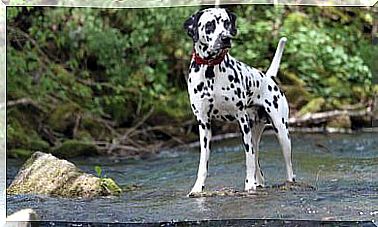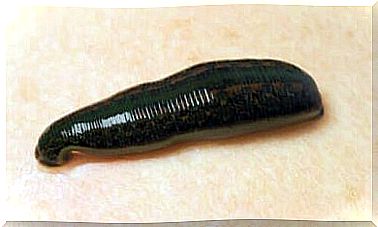The Importance Of Krill In Marine Ecosystems
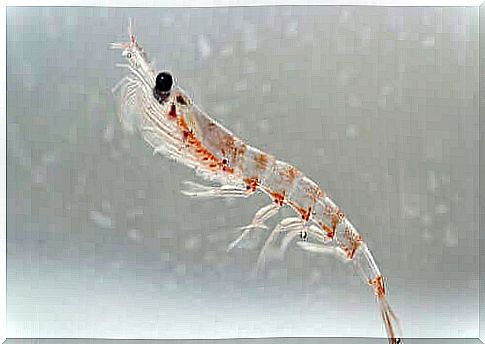
When krill is about designated 86 species of crustaceans that live in marine ecosystems. Known as luminous shrimp, they form part of the zooplankton that feeds directly on marine phytoplankton.
The best known for commercial fishing are the Antarctic krill , the Pacific krill and the Nordic krill, which mainly belong to the species Euphausia superba , Euphausia pacifica and Meganyctiphanes norvegica .
The adult krill is between 5 and 12 inches long. In the early stages, krill larvae are generally considered to be part of marine zooplankton.
The power of krill in marine ecosystems lies in unity
One trait of krill, perhaps the most ecologically important one, is its herd behavior. When these crustaceans reach adulthood, they begin to gather in huge groups or schools.
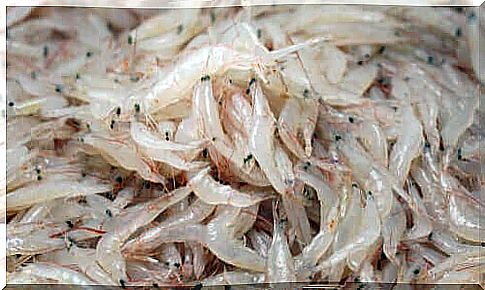
The extent that these concentrations reach can vary widely. Swarms ranging from a few square meters to 300 square kilometers have been observed.
With the exception of bacteria, these swarms, which stretch for miles in all directions, represent the largest biomass on the planet.
Why is krill biomass important in marine ecosystems?
Recall that a food chain is a linear network of connections that begins with producing or autotrophic organisms. This is the case with marine phytoplankton species with chlorophyll, which use solar radiation to produce their food.
The chain continues when autotrophic organisms become food for herbivores. This is the case with phytoplankton, which serve as food for krill.
This new member in turn serves as food for other living beings until predatory species such as a lion, a brown bear or humans are reached. Finally, the chain ends with the involvement of detritivorous species that break down organic waste. These species include earthworms, for example. At the end of the chain there are also corrosive species (the microbiome), which include fungi and bacteria.
The food chains inevitably connect all living organisms through the food we eat. Each level of a food chain represents a different trophic level.
Holdings and Distribution
As mentioned earlier, krill biomass can be the largest of all multicellular animal species on the planet. Experts therefore believe that the krill is one of the most common and successful animals on earth in marine ecosystems.
The krill is found exclusively in the sea and is distributed over the oceans of the earth, usually to a depth of 200 meters. Its distribution gradient is often related to the thermal properties of the water columns.
In addition , its presence is also linked to other special features of the oceanic ecosystem, such as upwelling zones. Upwelling is the ascent of deep, mineral and nutrient-rich waters from the abyssal zone of the ocean to the surface of the sea.
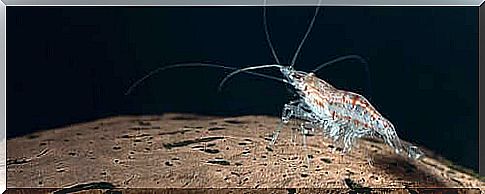
The krill has the ability to travel great distances vertically. Most of the time, schools of krill stay deep in the water during the day and only come to the surface at night.
Mainly for food , many species make great vertical migrations daily, typically covering more than 200 meters at night. It is not known why swarms can occasionally be seen on the surface during the day.
The experts hope that detailed information about their daily vertical movements can provide data to better understand their role in the biological cycle of the marine ecosystem.
Economic importance of krill in marine ecosystems
The krill is a reserve for large amounts of trace elements, vitamin A, vitamins of the B group and essential fatty acids. Krill paste or components derived from krill can be used as animal feed and in therapeutic human nutrition.
However, its greatest importance is ecological, as krill is an important part of the diet of many animals. It is the food of whales, seals, countless species of fish, birds and, to a lesser extent, humans.
The decline in the krill population in oceans can therefore have far-reaching effects on the marine ecosystem. For example, the decline in phytoplankton species consumed by krill may lead to a decrease in the population of other marine species that feed on krill or indirectly on other species in the same food chain.
